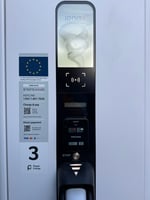A half-disapointing month for EVs in November. Numbers show a 68% decrease in BEV sales while the ov...
Blog
Lorem ipsum dolor sit amet, consectetur adipiscing elit.

During the last few months 4 DC charge points delivering 150kW (also known as HPC – High Power Charg...
New PHEVs represent in October 4.63% of the car market, with 107 units registered, and 2446 so far t...

For the second month in a row, the VW ID.3 is leading the BEV sales in Ireland (and again, the whole...
On Saturday 7th November, we hosted our first virtual event of the winter season. The theme for this...

By Simon Acton – October 6th, 2020

By Simon Acton – October 5th, 2020

Drive people to your products and services
Lorem ipsum dolor sit amet, consectetur adipiscing elit, sed do eiusmod tempor incididunt ut labore et dolore magna aliqua.



